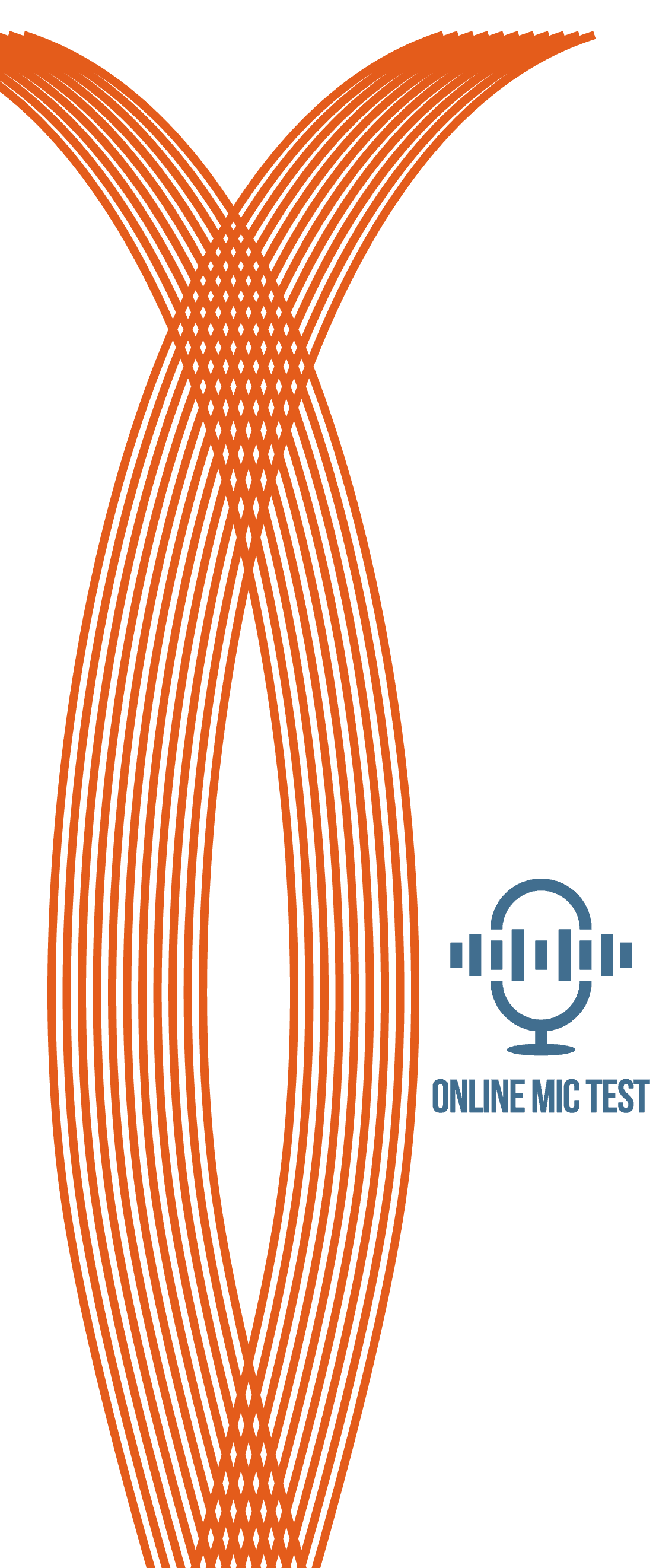Banjo Tuner
Follow these simple steps to tune your banjo:
- 1Press 'Play'.
- 2If a pop-up asks permission to use your microphone, click 'Allow'.
- 3Pluck the desired string and twist its tuning peg up or down until the grey circle matches the desired string.
- 4Then, pluck the string again and slowly adjust the tuning peg. Repeat until the orange and grey circles match. Your string is now tuned.
- 5Continue tuning the rest of your strings until all of them are tuned.
- 6Now play your heart out!
Trouble-Shooting Guide:
If the microphone has been allowed but the tuner isn't responding to sounds from your instrument,
see below for possible solutions:
- Check your microphone to make sure it is working properly. You can use the test on our home page and find out more information about microphone troubleshooting here.
- If your microphone is external (meaning not built into your computer) then check to make sure it is securely connected to your input USB port.
- Some microphones have an “ON” / “OFF” mode. Make sure your microphone is set to “ON”.
- Check to make sure that your microphone is not muted. For help with different operating systems and microphone problems, check out our "TECHNICAL GUIDES" section on the left-side menu.
- You can try to use a different browser, like Google Chrome or Mozilla Firefox.
More About This Page:
Background of the Banjo
The banjo is a North American string instrument with origins dating back to the instruments of West Africa, such as the Kora, knowledge of which was brought to the Americas by enslaved people in the 17th century.
The banjo formed an integral part of early African American traditional music, it subsequently went on to be used in the development of many other types of genres, most notably folk, country, Appalachian and bluegrass music.
What types of banjos exist?
The classic and most common style of banjo has five strings, with a shorter 5th string that is the highest in pitch. It is normally tuned to open tuning and played with a plectrum or finger picked to give it that distinctive "twangy" sound. Open tuning suits the banjo as it is a drone instrument (the same constant note can be played throughout, usually on the top string).
Over the past few years the six-string banjo has also seen a rise in popularity. In contrast to the classic five-string banjo the six-string banjo consist of a six-string guitar neck which is attached to a bluegrass or plectrum banjo body. This type of banjo can be easier to play for people who already know the guitar as there is no need to learn new fingerings or tunings.
There are also many other types of banjo such as the tenor banjo, four stringed banjo, and banjolele. Once you've mastered the classics why not give these others a try?!
What types of tunings exist, and what are they for?
Most 5-string banjo players utilize Open G (G4 D3 G3 B3 D4) as their standard tuning. The name Open G comes from the fact that when you strum the open strings in this tuning, you get a G chord without fretting any notes.
But there are alternative tunings preferred by different 5-string and 4-string tenor banjo players because they provide a unique tonal quality to their sound. Here are some examples of typical alternate tunings and variations:
- G Modal (G, D, G, C, D) - This is another commonly used 5-string banjo tuning. The second string is tuned up to a C note, close to standard G tuning. Also known as "Mountain Minor Tuning" or "Sawmill Tuning." It has a retro vibe to it and is frequently used to play folk music.
- Standard Tenor Tuning (G, C, D, A) - This is the standard tenor banjo tuning. Because of its snappy twang, this tuning became popular among jazz performers.
- Irish Tenor Tuning (G, D, A, E) - This tuning is also in fifths but lower in pitch. The Irish tenor tuning is popular because it resembles the Irish fiddle. To avoid muddying the low pitch, strings with higher tension and instrument adjustments are required.
- Chicago Tuning (D, G, B, E)- This tuning resembles a guitar's top four strings so that one can use the same chords and scales as a guitar. This tuning offers a deep, rich tone. However, transposing certain music can be problematic on this.
- Adapted Jazz Tuning (D, A, E, B) - This tuning is a jazz adaptation that is also prevalent in Irish folk music. The strings are kept under high tension, so they can snap easily. But it lacks the low-end of other banjos.
Which tunings does this online tuner support?
Our online tuner supports most 5-string banjos. Tuning options include:
- Open G - g, D, G, B, D.
- Double C - g, C, G, C, D.
- G Sawmill - g, D, G, C, D.
- Drop C - g, C, G, B, D.
- Open D - f#, D, F#, A, D.
What are the other methods of tuning a banjo?
- Microphone-based Tuner: Our online tuners are microphone-based: they capture the sound of the banjo or other instrument with a microphone and then utilize an algorithm to calculate its pitch. App-based tuners in mobile phones and laptops use similar algorithms. It’s a straightforward and convenient method of tuning a banjo.
- Vibration-based Physical Tuner:A physical tuner measures the vibrations produced by the strings. It mounts to the banjo’s headstock and uses piezo sensors. They have a small graphic display to guide you while tuning. These are great for live performers but are unnecessarily expensive for home practice.
- By Ear:The traditional method of tuning the banjo is by ear, but it takes a lot of practice and ear training. Beginners may find this challenging. Hence, beginners should use precise tuners to train their ears to the proper pitch.
How do I tune my banjo by ear?
Tuning your banjo by ear is a great way to improve your ear’s music training. For this guide, we’re assuming a 5-string banjo in Open G tuning. Here’s how you tune your banjo by ear:
- First, tune the lowest string (4th) string using a reference (our online tuner, a tuning fork, or a piano).
- Pluck the fifth fret of the D string (a G note) and the open G string together. Tune the G string until it resonates with the D string.
- Now pluck the fourth fret of the G string and the open B string together, then tune accordingly.
- Pluck the third fret of the B string and the open D string together, and tune the D string.
- Finally, pluck the fifth fret of the D string and the open G string (fifth string) together, and tune it.
If you want to see a visual representation of this method, check out this video.
What to do if I can't get my banjo in tune?
Every banjo is made of wood and metal, and they have several nuts and bolts. These can come loose over time and impact the tuning stability.
The most common culprits are the tuning pegs, which can get loosened due to wear and tear. For this, simply tighten the screws that hold the tuning pegs.
Banjos may also lose tune due to differences in temperature and humidity. We recommend storing the banjo safely in its bag when not being used to avoid drastic changes.
Old strings may also cause tuning instability. If they start to rust, you should replace them with fresh strings.
And if all else fails, you should take it to a professional luthier. We do not recommend making repairs yourself.

